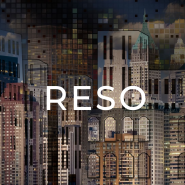 TAG Profiles is a blog series that explores the work of current TAG scholars. Jessie Marchessault is a recent graduate of Concordia’s Graduate Diploma (GrDip) in Communication Studies, and is about to enter the Media Studies (MA) program. Her supervisor is Mia Consalvo, Canada Research Chair in Game Studies and Design.
TAG Profiles is a blog series that explores the work of current TAG scholars. Jessie Marchessault is a recent graduate of Concordia’s Graduate Diploma (GrDip) in Communication Studies, and is about to enter the Media Studies (MA) program. Her supervisor is Mia Consalvo, Canada Research Chair in Game Studies and Design.
The Media Studies (MA) program features a few different options for students (thesis, research-creation, etc). Which one are you pursuing?
I am actually at a bit of of a crossroads at the moment. I applied to the program as a thesis student, but that was back in January while I was still completing my graduate diploma. The work I was doing in the diploma program was very media production heavy (sound editing, film production, and intermedia) and I ended up really getting into both After Effects and game development.
When I was doing my undergraduate diploma at McGill, my work was primarily based around writing and research, so I hadn’t explored the possibilities for this type of creative work. Learning through creation made me realize that I actually really love the whole process. It lets you develop different types of insight, I think, in addition to traditional academic scholarship.
What are you research interests heading into the Media Studies (MA) program?
I have a two-part answer to your question. I applied to the program with an interest in pervasive and location based games. I was very much intrigued by the idea of playable cities and the transformation of public spaces into places of play and digital attractions. I had originally intended to explore that topic as a thesis, but the research-creation side to that (if I choose to pursue it) would be to maybe make a location based game myself.
My other interest is related on the work I’ve been doing as a lead research assistant with Indie Interfaces: MESI Quebec-GPS Discoverability Engine Project, with professor Bart Simon. The goal of the project is to increase the opportunities for indie game discoverability, especially amidst the ongoing “indiepocalypse.” With so many games being released every year, we want to get an idea of what studios can do to increase the chances of their game becoming discovered. My job with the project is to track whether or not specific initiatives are making a difference, and to examine the ways we approach visibility, engagement, discoverability, and community development.
If I were to carry forward this work into my Media Studies degree, I’d be interested in collaborating with some of the developers who are based here in Montreal and creating something with them. The idea behind the work would be to give me a more hands-on perspective to how a studio functions.
Creating something? Like, developing a game or interactive project?
Yes! I’d like to work alongside them. I don’t have the technical background to just jump in and make a larger scale game on my own, but I think it’d be interesting to do something collaborative with members of the community. I could perhaps work through the Pixelles or maybe through some of the contacts I’ve made at GameplaySpace.
 You mentioned the possibility of developing a game as part of your master’s degree, but I understand you’re actually working on one already. Could you tell me where the game is at and what it is about?
You mentioned the possibility of developing a game as part of your master’s degree, but I understand you’re actually working on one already. Could you tell me where the game is at and what it is about?
The game is called RESO: A Playful Exploration of the Montreal Underground City and I currently have a prototype that I made in Twine for my research methods course. The idea in the course was to develop a project from pretty much the first day of class to the very end of the year. When I first began the project I was like “I’m going to make a huge game! A 200 step game!” But I realized that, having never used Twine before and not knowing HTML or CSS, that it would be a very learning-heavy process for me just to get started.
What I have right now is a playable prototype game with about 50 steps and choices. Essentially, you start off at the beginning of the RESO network – Montreal’s underground city – and the choices you make lead you down separate paths through the city. I’m definitely going to continue working on it, as right now I’ve only managed to get just outside of the mall area. There is so much more to the underground city!
What sparked your interest in the underground city?
I’m really interested in these sort of in-between spaces, liminal spaces, transitory spaces. I’ve lived in Montreal for ten years now and I love the city, and I realized that we kind of just use the tunnels, here and there, when its cold as a sort of shelter from the weather. Then I began to notice that there were all these other directions that the tunnels took outside of the main paths, and that it was a somewhat mysterious labyrinth space. So I began to explore it on my own – while taking photos and recording sounds – just to get an idea of what the space is made up of.
The idea was to decode this mysterious underground city that exists, not necessarily below us, but interwoven throughout the downtown core. And to create a game that lets a player make her own decisions about what directions they take and where they end up. There’s a lot of dead ends in the actual underground city and when you reach those dead ends in my game you find yourself thinking: “oh now, what do I do now?” It’s a way to bring the myth and mystery of the underground city into a game.
If people want to play your game, where can they find it?
The game isn’t currently hosted publicly, but you can download the HTML file and open it in a browser to play it!
